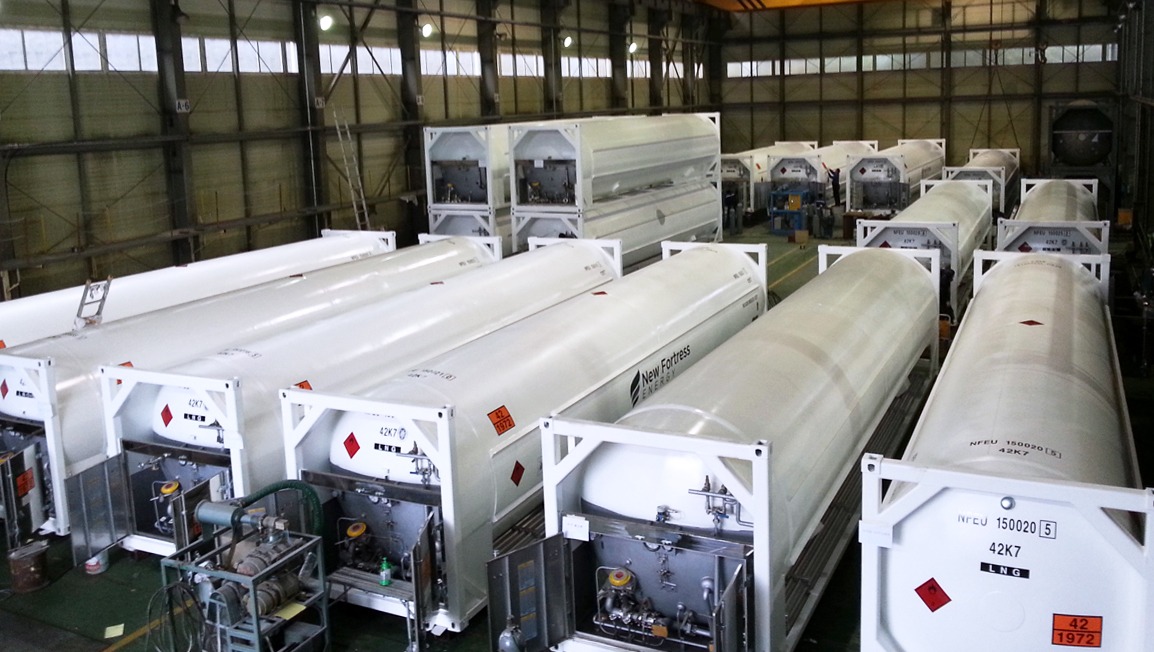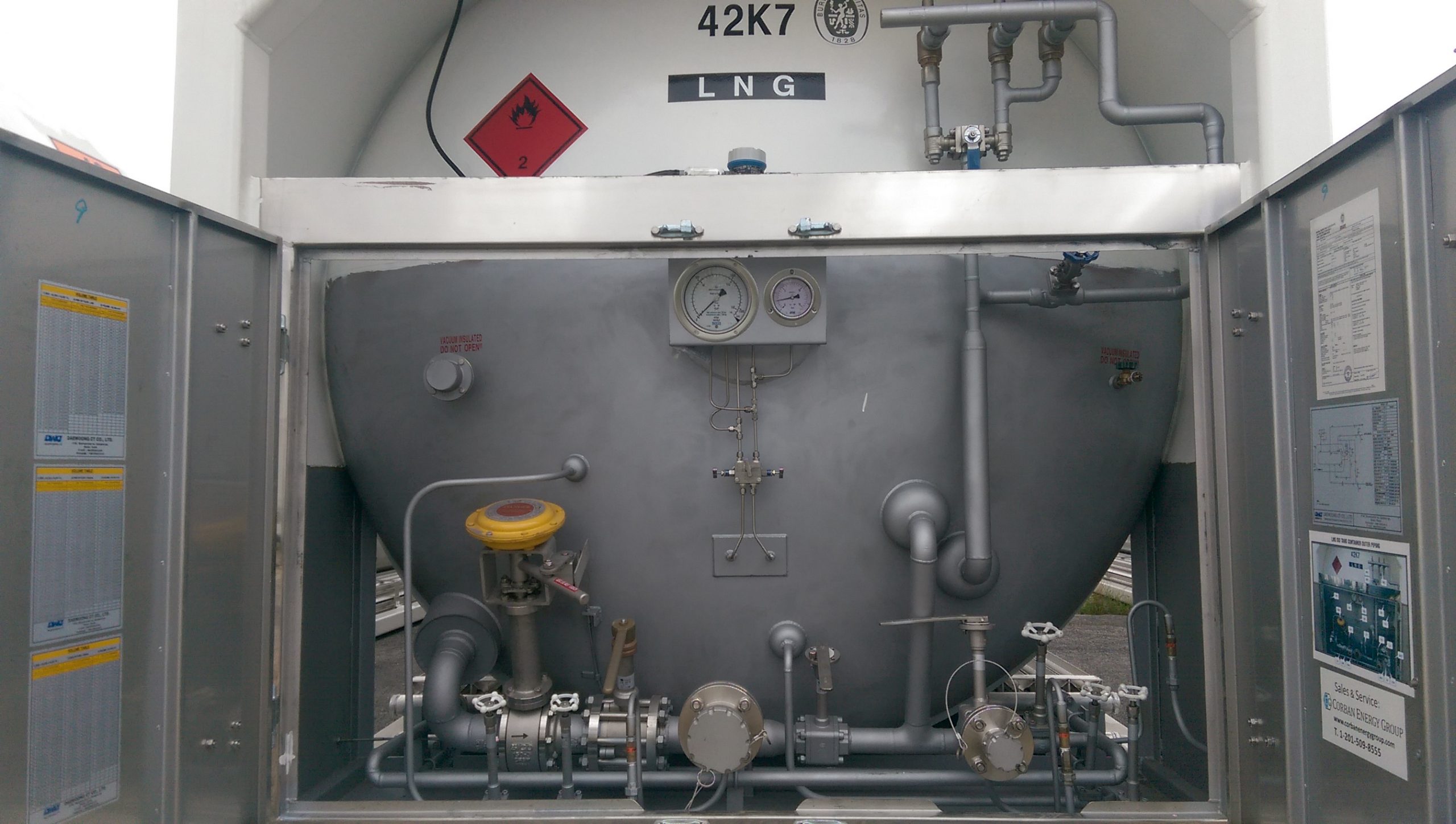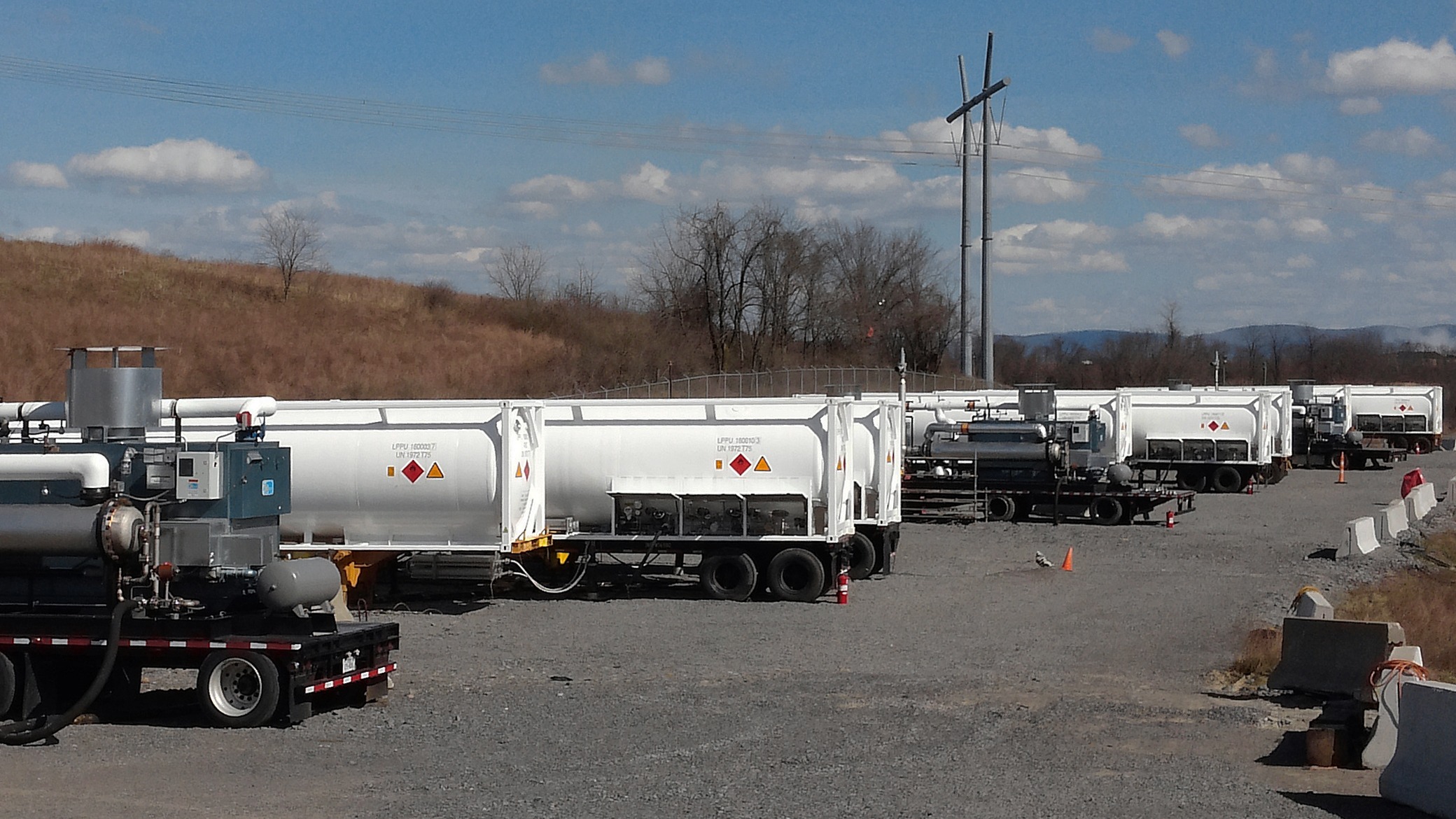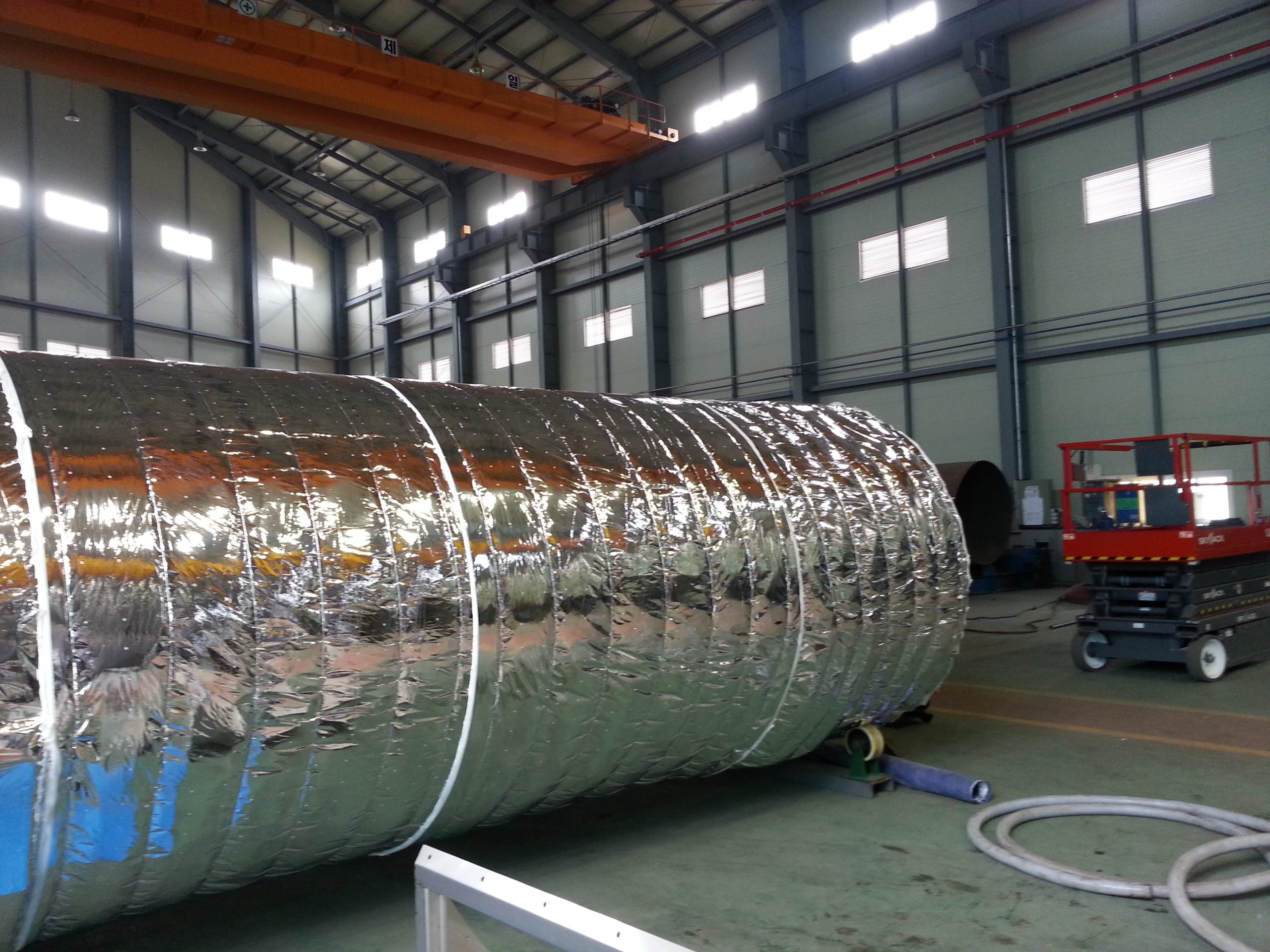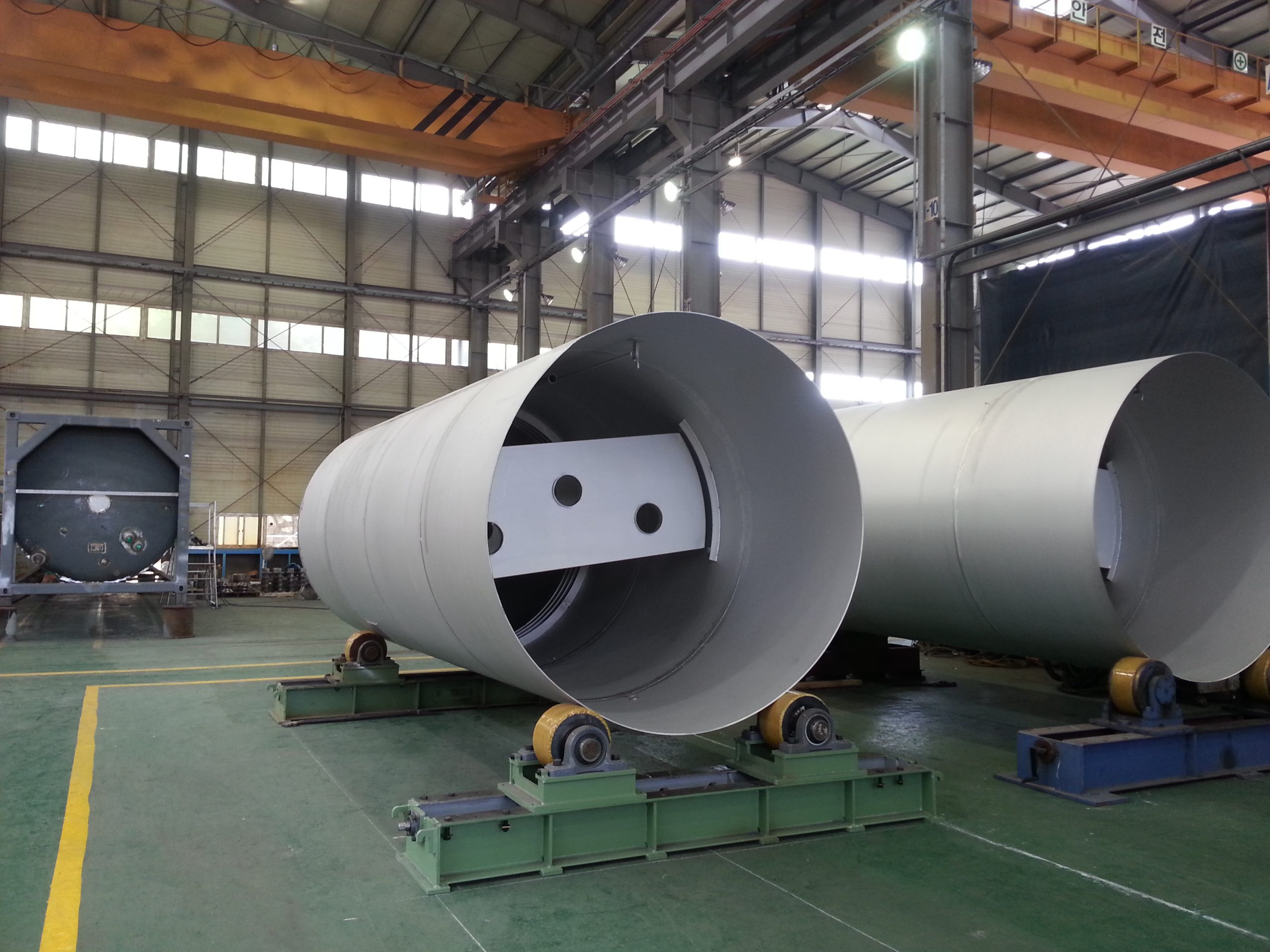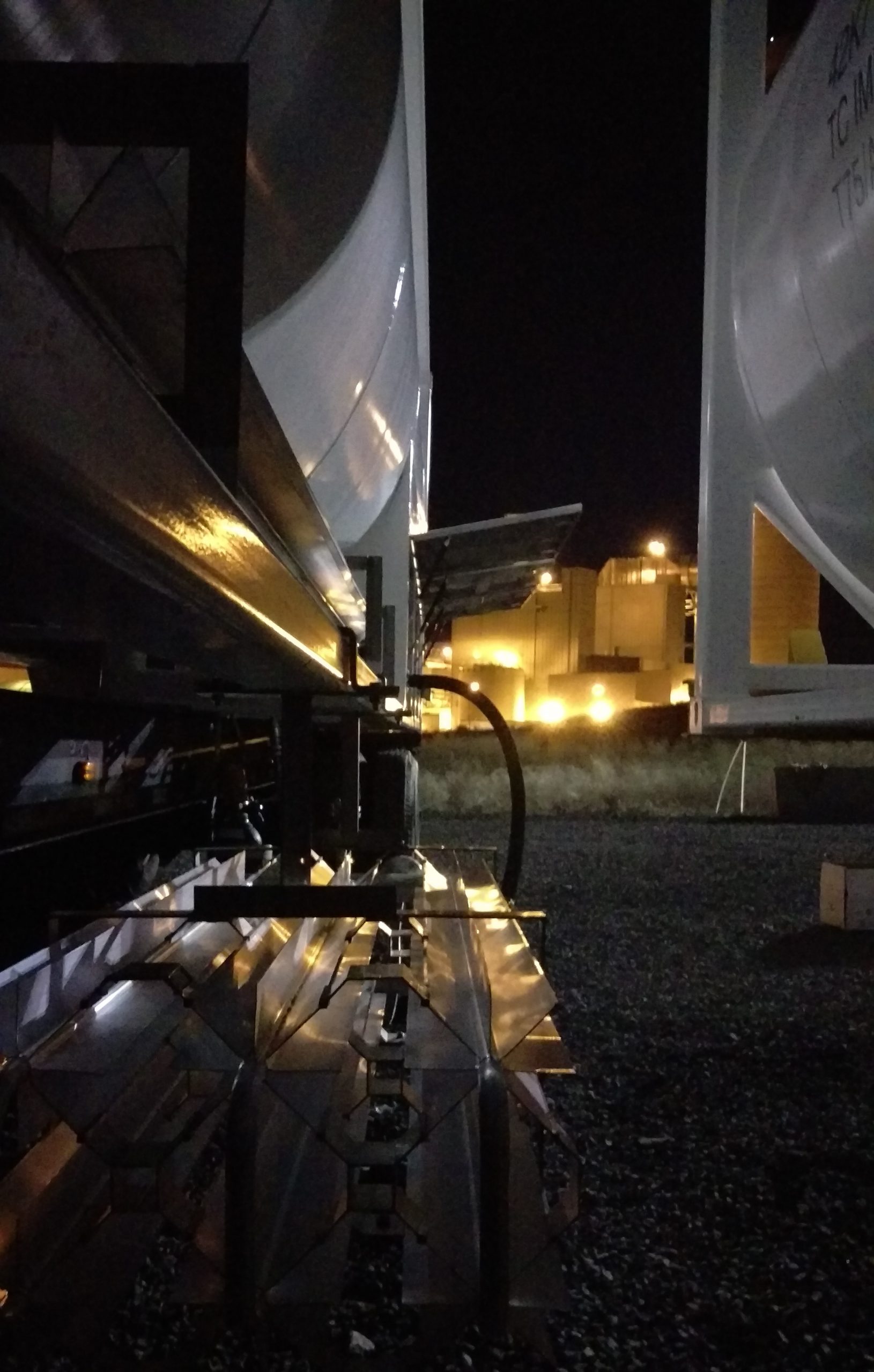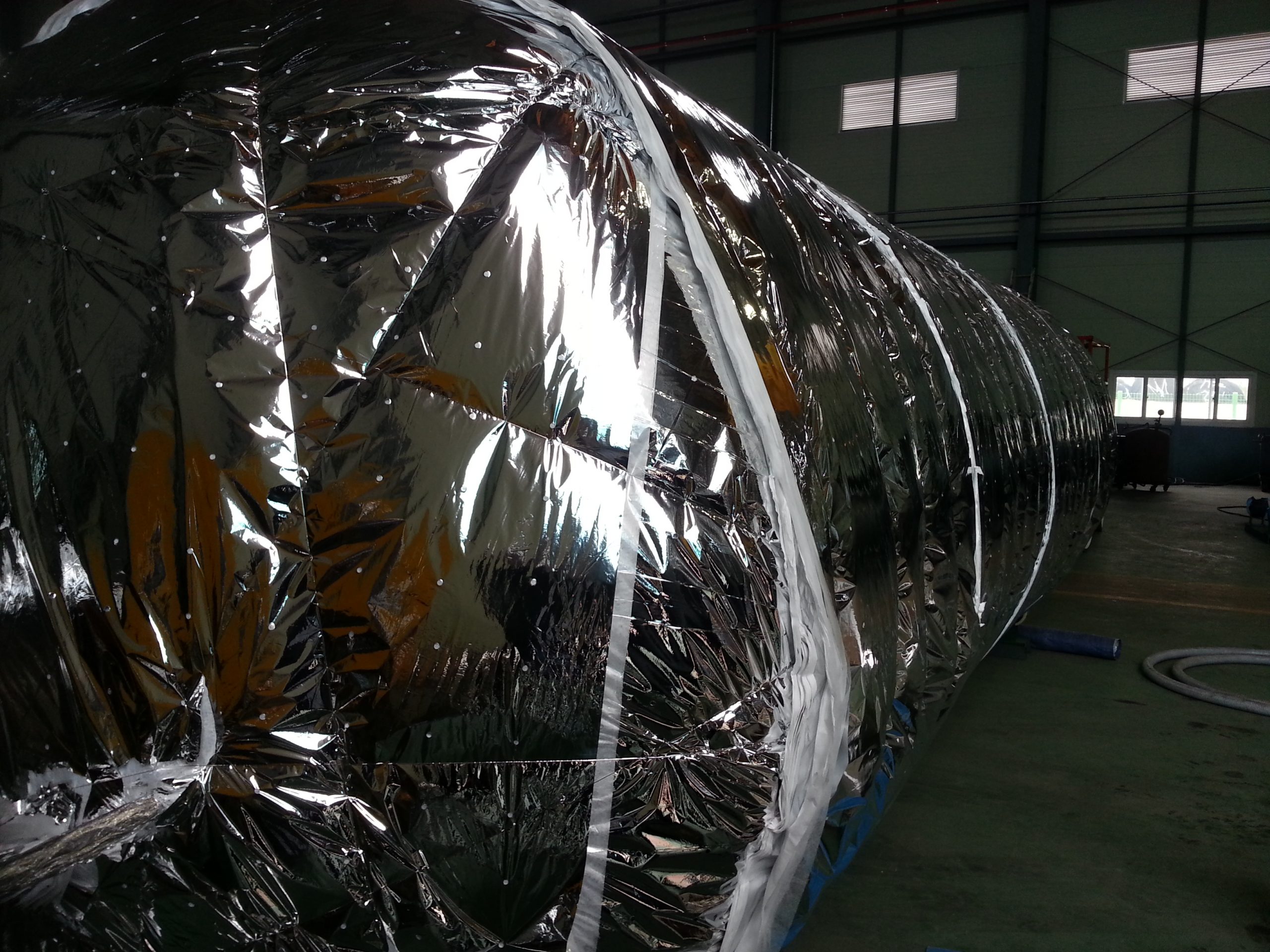Buy 40ft ISO LNG Container Online
Buy 40ft ISO LNG Container Online
The use of tank containers for storage has been a game changer for many small to mid-size companies. Tank containers can commonly be stacked up to six units high, and can be piped together and manifolded. The flexibility of tank containers as a storage tank combined with clear cost and time savings versus land-based storage tanks has given bulk liquid and gas producers and users an alternative for their long-term and short-term storage needs.
$48,500.00 $51,000.00
Buy 40ft ISO LNG Container Online
40ft ISO Tank Container For Sale
Tank Container & ISO Tank Container – The Ultimate Guide
LNG ISO INTERMODAL CONTAINERS
ISO CRYOGENIC BULK LIQUIDS
Chart’s LNG (Liquefied Natural Gas) ISO Intermodal Containers are clearly the easiest method of LNG transport.
Chart’s LNG containers are used to transport LNG worldwide by ship, rail or road and are considered the best
value available on the market.
An LNG ISO tank has two containers — an inner tank containing LNG, and an outer tank with insulation materials. Full containment tanks are most common and vary significantly in size based on their purpose. Transporting LNG in ISO tanks is an innovative and effective alternative to conventional natural gas distribution.
40ft Liquefied Natural Gas (LNG) ISO Container
Using state-of-the-art technology from Chart allows you to take advantage of the many benefits and features.
Count on Chart to help you transport LNG with ease.
Tank containers are barrel-shaped vessels serving multi-purposes and use for the bulk transportation of the following materials
LNG ISO Tank and how to get them at the best price.
40 feet cryogenic 40ft lng iso tank container
As the demand for international trade rises day by day, the need for good quality and reliable means of conveyance increases. To carry liquefied natural gas across the world, the LNG ISO tank caters to the demand with a variety of customizable features.
T75 40FT LNG ISO Tank Container 45500liters Portable Natural Gas Tank
A tank container is suitable for transportation of materials whether they are hazardous and non-hazardous.
In many countries, LNG ISO tank containers are used to optimize energy supply chains and obtain Liquefied Natural Gas (LNG) for use in cities and remote locations. The LNG containers are available for short and long-term lease and offer an effective solution to the LNG supply problem
40ft LNG Iso Container For Sale
The ISO VAC 40-LNG has been designed as a standard 40ft ISO Container for the safe storage and transport of Liquefied Natural Gas (LNG)
This new addition to our range is built around a standard 40ft ISO frame with Blair corner castings, & lockable valve protection cabinet, containing the valves, gauges, vacuum check gauge connection and a separate document holder.
This tank can also be configured to accept cryogenic transfer pumps. This tank has approvals for road, rail and sea transport.
The tank can be produced with working pressures ranging from 100psi to 10 Bar and can be used for the safe transport of LNG.
The ISO VAC 40 LNG also features high vacuum super-insulation, stacking capability 9 units high to ISO 1496 – 3, full set of decals (including logo’s where supplied by customer), and various pipework and valve options to offer maximum versatility to end user and operator.
Watch here our animation about the 40ft rebuild bitumen tank
LNG ISO INTERMODAL CONTAINERS
ISO CRYOGENIC BULK LIQUIDS
ISO intermodal containers utilize rugged,
This LNG tank container is manufactured for use in trans-shipment as well as land trailer and train
transportation as a 40 ft tank container; the ISO 40ft dimension tank container frame loads a cryogenic
a container as well as pertaining valves and measuring instruments, and shall be used for container
transport of liquefied natural gas.
The cryogenic container consists of a stainless steel inner vessel and carbon steel outer vessel, and the
the insulation layer consists of vacuum composite insulation so that natural evaporation of the liquefied
natural gas is kept to an absolute minimum and able to provide safe transportation. Also, the necessary
valves and measuring instruments for the operation are compactly installed inside the rear operating
cabinet.
In times of unloading etc., the pressurizing evaporator will use the local ground facilities, and a pressure
build coil is not installed.
Each instrument of this LNG tank container is manufactured according to UN Portable Tank T75, and
specifications are respectively regulated by those related laws and rules, making operational safety etc. a
requirement. When using these facilities, please fully understand the function of the apparatus for correct
operations, in order to safely and efficiently use the stored gas.
What Can You Transport In LNG ISO Tank Containers?
LNG ISO tank containers are intermodal containers used to move liquids, gases, and powders. It is built in accordance with the ISO standards, making it suitable for different modes of transportation. Both hazardous and non-hazardous products can be transported in tank containers.
LNG tanks are typically constructed with 4 to 6 tanks arranged in a row down the center. The vessel has a double-hull design because two separate ballast tanks, cofferdams, and voids surround the tanks.
LNG or Liquified Natural Gas is natural gas (predominantly methane, CH4, with some mixture of ethane, C2H6) converted into liquid form for storage or transportation without the use of pressurized vessels or storage. LNG is odorless, colorless, non-toxic, and non-corrosive gas.
The market is full of companies providing LNG ISO tanks at standard rates. xChange helps you to find the right LNG ISO tank container as per your requirements from a pool of verified suppliers.
ISO Tank Container Types
ISO tanks are cost-effective containers as they can store and transport material with a lower shipping and transportation cost. There are different types of ISO tank containers available in the market catering to diverse requirements.
ISO Tank Containers are regulated by ISO standards which mandate their manufacturing, testing, and certification as per international guidelines. This certification guarantees their reliability to transport a range of products from food, oil, chemicals, solvents, and fuel.
Here are the major types of ISO tank containers:
Food-grade Tank Container
- Used to transport food products made of stainless steel with mineral wool insulation.
Silo Tank Container
- Transport bulk powder commodities like cement, fly ash, plaster, and lime.
Swap-body Tank Container
- Comes with a barrel that is larger than the frame, and the standard length is 23 to 25 feet.
Reefer Tank Container
- A refrigerated tank that maintains a set temperature to preserve products.
Gas Tank Container
- Suitable for the intermodal transportation of liquefied gases.
Multi-compartment Tank Container
- Have 1/2 partitions inside the tank to allow different products to be shipped in a single container.
LNG ISO Tanks Container
- Used to transport liquids, gases, and powders as bulk cargo.
ISO Container Solutions
Norgas has developed a concept for distribution of LNG on 40ft ISO containers for potential gas consumers not connected to a pipeline today. Applicable for smaller LNG volumes (0-100MW equivalent power plants, but can also be economically developed for up to 300MW depending on LNG sourcing point) and customers requiring quick startup.
LNG ISO Container Solutions – Intermodal LNG Transportation
- developed a concept for distribution of LNG on 40ft ISO containers for potential gas consumers not connected to a pipeline today providing prospective clients with the following benefits:
-
Reduced lead time compared to conventional Small Scale LNG solutions – 6 months vs 24-36 months.
-
The use of standard ISO LNG containers with IMDG certification does not require extensive approval procedures before application. Can be used at the existing port and road infrastructure.
-
Lower CAPEX as intermodular infrastructure can be rented on a shorter-term basis.
-
The LNG ISO container solution can be applied anywhere in the world with a container port and suitable roads to move containers on land.
-
- LNG can be supplied from a truck loading unit connected to a terminal or storage tank (relevant examples are Spain or Singapore), or a floating barge with a truck loading unit that can be moored against a large LNG carrier creating a “floating jetty”.
- If loaded from an LNG Carrier, a barge can be stationed alongside an LNG “Mother vessel” where the empty containers received from the feeder’s vessel can be filled up.
- The LNG ISO containers can be transported by sea on traditional container feeder vessels, or alternatively an economical Norgas ISO carrier can be developed by utilizing an existing Offshore Support Vessel with minimal modifications.
The transportation of LNG via ISO tank containers is an innovative and effective supplement to conventional natural gas distribution. It is a flexible, quick, and low-cost solution with a short lead time. It’s a well proven solution and the ISO LNG tank container model is very well suited as a start-up solution or for smaller volumes in remote locations.
Top
Top
Rear side
Top of the bitumen tank
Pressure relief valves are refurbished and installed. And of course, set on the right settings.The manlid and other valves are fitted with new gaskets.
Flame Tubes
The flame tube system inside the Bitumen tank
Temperature
A new temperature meter is installed which can indicate a temperature up to 250 Degrees Celsius.
Flame Tubes
The flame tube system can reach up to a temperature -20/+230 °C and is certified by Lloyds Register and compatible with IMO/ADR/RID/USDOT regulations.The IMO2 / T3 / L2.65BN codes will be applicable.
LNG Tank Container FAQ
Are LNG tanks pressurized?
What is a rollover in LNG tanks?
The rollover in LNG tanks occurs when the vapors from an LNG tank are rapidly released because of stratification.
Delivery
Because bitumen tanks are rebuilt from standard ISO tanks we can supply these units fast and unlimited from our depotThe rebuilt bitumen tanks can be delivered to any port worldwide.
LNG ISO Tank Container Specifications
LNG ISO tank containers are the easiest means of conveyance to transport liquified natural gases. The tank containers are available in various specifications to serve different purposes.
Similarly, two 40ft LNG ISO containers can have different specifications, and they can be leveraged for different purposes. For instance, a 40ft cryogenic LNG ISO container provides an exceptional 45,000 liters of capacity with an incomparable total payload of up to 36,000 kg. The working pressures for a 40ft LNG ISO standard container range between 10 BARG to 22 BARG with and without pump options.
Furthermore, a 45 ft swap body type LNG ISO container is also available in the market with a 7 BARG working pressure and a maximum capacity of 60,000 liters, ensuring the fastest liquid transport with low tare weight.
LNG ISO Tank Types
There are a variety of LNG ISO containers available in the market, like:
ContainerType |
Container Specification(L x B x H /mm) |
Loading Capacity(in L) |
Design Temperature(ºC) |
| 20 ft LNG ISO Container | 6058 x 2438 x 2591 | 22,000 L | 55 |
| 40 ft LNG ISO Container | 12460 x 2500 x 3980 | 25,000 L | 55 |
| 20 ft Standard Cryogenic LNG ISO | 6058 x 2438 x 2591 | 20,200 L | 55 |
These containers are made of stainless steel and are surrounded by various types of protective layers. Based on the cargo type, different skins can be used. The container has a manhole on the top along with at least one valve and another valve on the bottom. They are shaped like a cylinder. Since ISO tanks are built based on ISO standards, the frame in which the tank sits measures about 6 meters long, 2.4 meters wide, and between 2.4 – 2.5 meters high and varies in size and type, and can carry between 21,000 and 40,000 liters of liquid.
LNG Container Safety Considerations
LNG ISO tank containers are advised to be handled with extra care since they might contain highly inflammable shipments. Here are some other safety aspects to consider:
- Whenever handling natural gas, there is a possibility that gas will permeate clothing, so avoid smoking near the tank, especially while filling and discharging.
- In case of a leak, remove any ignition sources and cut off the gas supply. Further, shut off the leaky spot, and have ample ventilation. Also, make sure it is away from any electrical units.
LNG Tanks Under Pressure
LNG ISO tank containers are multi-layered vacuum-insulated pressure tanks, supported by double-walled transport tanks. They are designed for efficient and economical transportation of LNG. The maximum pressure level of an LNG ISO tank container is 0.690 MPa.
What are the types of Tank Containers?
Various tank containers are depending on the usage. These tanks have various applications which are explained in the table below:
| Container Type | Usage |
| Fuel tank | For transporting gases. |
| Storehouse tank | To ship grains and powders |
| Reefer tank | This has the capacity to cool the item to be shipped |
| Food-grade tank | It is a standard tank container that can only ship food items |
| Swap body tank | Swap body tank normally has a bigger cubic limit than standard ISO containers making them ideal for moving extremely lightweight cargoes. |
| Baffle Tanks | Warming frameworks including steam, warm water, and thermostatically controlled electrical warming or cooling can be included in this tank container. |
| Lined Tanks | They are intended for the transport of both pure or exceptionally destructive items. This sort of tank is lined and has extra security frameworks. |
| Heated Tanks | To ship items that must be kept hot or warm during the transport. |
What is the Average Cost of Every Type of Tank Container?
All businesses need to invest carefully to prevent any kind of loss. As the new containers cost a lot, people usually go for used containers. Below is a comparison between the price of a new and a used tank container in a tabular form.
| Cost of New Container | Cost of Used Container | |
| 20-foot tank container | £9,100.00 | £6,200.00 |
| 40-foot tank container | £10,500.00 | £7,000.00 |
Also, Read
| Open Top Container | Hard Top Container |
| Platform Container | Insulated Shipping |
| Flat Rack Container | Pallet Wide Containers |
| Intermediate Bulk Container | Reefer Container |
| Ventilated Container | Dry Container |
Uses of Tank Container
A tank container is used for the storage or bulk transportation of liquids, chemicals, or food items including:
- Groceries
- Wines and Spirits
- Organic product juices
- Sweet Oils
- Synthetics
- Fills
- Harmful substances
- Gases
The items to be transported are labeled under IMO. IMO types refer to the grouping of dangerous goods. The tank containers can be used to ship the items of the following classes.
Below are some of the benefits of ISO tank containers.
1. ISO tank containers are a reliable, cost-effective (depending on the product being shipped) and definitely safe way of transporting bulk liquids.2. ISO tanks are designed to meet specific criteria according to the substance they will be carrying.3. Because of the above, ISO tanks are very reliable and can withstand extreme pressure and damage.4. ISO tanks are highly unlikely to leak and do not require additional packaging materials for cargo.5. ISO tanks maintain a specific temperature for temperature-sensitive cargo and can be transported by land or ocean.
| IMO Type | Class | Flashpoint of materials | Type of materials | Tank type |
| IMO Type 1 | 1,3-9 | Under 0°C | explosives, combustible fluids, and destructive and harmful substances. | Hazardous Tanks |
| IMO Type 2 | 3 | 0 – 61°C | flammable fluids incorporate diesel and cooking oils. | Low Hazardous Tanks |
| IMO Type 5 | 2 | non-refrigerated condensed gases | Gas Tanks |
For reference, IMO represents the International Maritime Dangerous Goods Code.
Why Go for Tank Container?
They have multiple benefits and are
- More productive than utilizing more small drums.
- simple to ship
- simple and brisk load and unload load through rooftop lids and valves.
Using a Tank Container disposes of the dangers of relocating or moving liquids from one vessel to the next. This gives a financially savvy, secure, and very protected suitable method of shipment.
After shipping, the tank container is moved to a cleaning terminal preparing it for the next cargo.
ISO Tank Container
ISO tanks are cost-effective as they can place and effectively transport less than shipload or truckload materials with much less shipping and handling cost. They can generally be stacked in 90mins whereas drums require a few hours.
Moreover, the freight can be easily carried by truck to the railroad, from the train to the transport deck and ISO tanks can also be shipped via air.
Like other container types, ISO tanks can also be stacked. Inter-modal containers Ltd. permits two ISO tanks to be shipped on the well with two more tanks loaded on top. This technique allows thousands of gallons of liquid to be shipped in much less time.
The ISO tank can accommodate around 4 thousand gallons much more than the previous standard-sized methods involving an IBC tank that could only place at around 3 thousand gallons each or 55-gallon drums.
Types and sizes:
All ISO holders require to adjust to guidelines, for example, size, strength, and reliability. ISO tank containers have dimensions and features set according to the principles of the International Organization for Standardization.
The ISO Tank Container permits the shipping of a wide range of items. From edible fluids and non-hazardous liquids to shipping dangerous materials including erosive and explosive materials, toxins, and flammables.
What is the average cost of an ISO Tank container?
You can buy an ISO Tank container for U$11,000.00, however, if worked beneficially for an additional 12 years, can cost you under US$1000.00/annum.
Types of ISO Tank Containers:
UN assigned the items that are appropriate for transportation inside a tank container with an extra ‘T’ code in the table, and this shows the sort of tank that should be utilized for shipping it.
Based on the usage, the following are the types of ISO Tank containers.
| Container Type | Usage |
| Rubber-lined ISO tank | To ship corrosive-based synthetic compounds |
| T1 ISO tank | For shipping wine and light fluids |
| T4 ISO tank | To transport non-perilous eatable and non-consumable oils |
| T11 ISO tank | To ship non-dangerous synthetics |
| T14 ISO tank holder | To ship dangerous synthetics and acids like HCl and zinc chloride |
| T50 ISO tank | To transport LPG and alkali gas |
| T75 ISO tank | For moving Cryogenic fluids |
T Code System Classifications for ISO Tank Containers
The IMO classifications for ISO Tank Containers have been replaced by the ‘T’ code system.
The T-Code system specifies the test pressure of each type of tank container, its shell thickness, the pressure relief set-up, and the bottom and top outlet arrangement. T-Code instructions apply to dangerous goods in classes 1 and 3 through 9. Class 2.
The T-Code system for tank containers was introduced in 2001. The T-Code system identifies tank containers from T1 through T22 and identifies the type of cargo each container is designed to carry.
ISO tank containers have to be manufactured in accordance with strict international codes for worldwide carriage of liquids whether by land or sea.
Whilst the following isn’t a complete listing of the IMO types, it provides an indication of the original system of classification.
IMO Type 1 – Hazardous Tanks – approved for transportation of substances of Class 1 and Classes 3 through 9 where the liquids have a flashpoint of less than 0°C. Some examples of the types of liquids include explosives, flammable liquids, and corrosive and toxic substances.
IMO Type 2 – Low Hazardous Tanks – approved for transportation of Class 3 substances that have a flashpoint of 0 – 61°C. Some examples of combustible liquids include diesel and cooking oils.
IMO Type 5 – Gas Tanks – approved for transport of non-refrigerated liquefied gases of Class 2.
For reference, IMO stands for International Maritime Dangerous Goods Code.
T Code System for ISO Tank Containers and specifications:
| T-Code | Minimum Test Pressure (bar) | Minimum Shell Thickness | Pressure-Relief Requirements | Bottom Opening Requirements |
|---|---|---|---|---|
| T1 | 1.5 | > or = 6mm | normal | 2 shut-off devices (Int + Ext) |
| T2 | 1.5 | > or = 6mm | normal | 3 shut-off devices (Int + Ext + cap/blank) |
| T3 | 2.65 | > or = 6mm | normal | 2 shut-off devices (Int + Ext) |
| T4 | 2.65 | > or = 6mm | normal | 3 shut-off devices (Int + Ext + cap/blank) |
| T5 | 2.65 | > or = 6mm | normal + rupture disc | Not Allowed |
| T6 | 4 | > or = 6mm | normal | 2 shut-off devices (Int + Ext) |
| T7 | 4 | > or = 6mm | normal | 3 shut-off devices (Int + Ext + cap/blank) |
| T8 | 4 | > or = 6mm | normal | Not Allowed |
| T9 | 4 | 6mm | normal | Not Allowed |
| T10 | 4 | 6mm | normal + rupture disc | Not Allowed |
| T11 | 6 | > or = 6mm | normal | 3 shut-off devices (Int + Ext + cap/blank) |
| T12 | 6 | > or = 6mm | normal + rupture disc | 3 shut-off devices (Int + Ext + cap/blank) |
| T13 | 6 | 6mm | normal | Not Allowed |
| T14 | 6 | 6mm | normal + rupture disc | Not Allowed |
| T15 | 10 | >or = 6mm | normal | 3 shut-off devices (Int + Ext + cap/blank) |
| T16 | 10 | > or = 6mm | normal + rupture disc | <3 shut-off devices (Int + Ext + cap/blank)/td> |
| T17 | 10 | 6mm | normal | 3 shut-off devices (Int + Ext + cap/blank) |
| T18 | 10 | 6mm | normal + rupture disc | Not Allowed |
| T19 | 10 | 6mm | normal + rupture disc | 3 shut-off devices (Int + Ext + cap/blank) |
| T20 | 10 | 8mm | normal + rupture disc | Not Allowed |
| T21 | 10 | 10mm | normal | Not Allowed |
| T22 | 10 | 10mm | normal + rupture disc | Not Allowed |
In addition to the above types of ISO tank containers, there are 2 others, namely, a T50 and a T70.
The T50 is a gas tank and has a minimum test pressure of 57.6 bar. Under the IMO system, this was classified IMO5.
The T70 is a cryogenic tank container designed for carrying liquefied gases. Under the IMO system, this was classified IMO7.
How Can use ISO tank Containers to manage our cargo effectively?
These tank containers are tough. Pressure load tests are played out each time a container is unloaded. As the ISO tank containers ship all types of hazardous or non-hazardous materials, they need to be certified and examined.
How to load materials?
You can load and unload a tank container from the top and the base by connecting the hoses to the valves. There are a vent and one valve on the top of a standard tank vessel, and there is a valve at the base.
The ISO frame makes these tank containers dispatched with Inter-modal containers Ltd. delivery choices that incorporate container ships, rail lines, and trucks.
Effective use of ISO Tanks
All in all, tank containers, at any rate, should always be 80% full, to prevent dangerous flooding of fluids during the transit. You can’t fill them more than 95%; otherwise, there will be no space to consider thermal expansion.
They can transport a number of hazardous and non-hazardous materials, including:
- Molasses
- Milk and other dairy items
- Alcoholic and Non-Alcoholic Beverages
- Condensed sugars
- Hydrogen Peroxide
- Sulfur Acid/Nitric Acid
- Synthetic compounds/Solvents
- Fluid Food Products
- Warming oil/Vegetable oils
- Gas/Diesel/Liquefied petrol gas
Dimensions of Tank and ISO Tank Containers
Around 95% of tank containers have 20ft dimensions despite the fact that they come in other sizes, including 10ft, 30ft, 40ft, and 45ft containers.
Standard ISO Tank Container Specifications
| Capacity | Gross Weight | Tare Weight | Payload | Steam Heating Coil | Max. Cargo Temp. | Test Pressure | Working Pressure |
| 21,000L | 36,000kg | 3,650kg | 32,350kg | 8m² | 120°C | 6.00 BAR | 4.00 BAR |
| 24,000L | 36,000kg | 3.900kg | 32,100kg | 8m² | 120°C | 6.00 BAR | 4.00 BAR |
| 25,000L | 36,000kg | 3,730kg | 32,270kg | 8m² | 130°C | 6.00 BAR | 4.00 BAR |
| 26,000L | 36,000kg | 4,060kg | 31,940kg | 8m² | 130°C | 6.00 BAR | 4.00 BAR |
20ft Standard Container
Dimensions
| Length | Width | Height | Door Width | Door Height |
| 6.058 m | 2.438 m | 2.59 m | 0.000 m | 0.000 m |
Specifications
| Tare Weight | Max. Cargo Weight | Max. Payload Weight |
| 4190 Kgs | 30,480kgs | 26, 290 kg |
40ft. tank Container
Dimensions
| Length | Width | Height | Door Width | Door Height |
| 12.192m | 2.438 m | 2.62 m | 0.000 m | 0.000 m |
Specifications
| Tare Weight | Max. Cargo Weight | Max. Payload Weight |
| 11,800 Kgs | 36,000kgs | 22, 200 kg |
45ft. tank Container
Dimensions:
| Length | Width | Height | Door Width | Door Height |
| 13.716m | 2.438 m | 2.62 m | 0.000 m | 0.000 m |
Specifications
| Tare Weight | Volume L | Max. Payload Weight |
| 16,370 Kgs | 54,120 L | 19,630kg |
HJH
